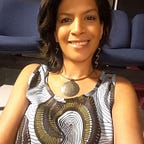Providing an impulse to teaching and learning in Mozambique, through technology
One of the challenges in the Mozambican education system is lack of access to educational material. Learners and teachers cannot always afford to purchase books or copies of didactic material or access online learning content, which greatly limits learning opportunities.
Combining technology and education to address this challenge is both daunting and highly motivational. It provides the opportunity to drastically turn the tables and for the sky to become the limit in terms of access to information and learning opportunities.
The MUVA Mexe project intends to make this sky dream come true by means of the development and implementation of a digital platform in a public school. The platform will provide free access to a large variety of educational material to students of the 11th and 12th Grades.
The digital platform will work as an intranet and e-learning tool and will include items such as: lesson plans, explanatory notes about the topics, exercises for preparation of tests and exams, videos and tutorials on various topics, digital library, forum, among others.
How did we start?
The MUVA Mexe project started its pilot phase in March 2018 in Lhanguene Secondary School, a public school located in one of the poorest neighbourhoods of the capital city, Maputo. The school has more than 3,000 students, aged 16–22, in the 11th and 12th year.
It was jointly decided, by the school and the MUVA Mexe team, that the project will initially cover four classes with an average of 50 students per class, over a one year period.
The project kicked-off with a needs assessment of teachers and students, gathering their perceptions regarding the importance of the project and the general contents they require to be included in the platform.
After the initial needs assessment questionnaires were distributed to all students in the four selected classes to gather more detailed information. This included information such as: the types of smartphones used; the way the devices are used to research; the time spent doing this research; as well as specific content students would like to see on the platform.
The survey was well received and both teachers and students were very enthusiastic about this project. They provided positive and rich feedback on how they wanted the platform to work.
We were surprised by the level of knowledge that students demonstrated regarding the use of technology and the level of research they already do through their devices.
Since we will be working with 11th and 12th grades, which are pre-university classes with exams, it was important to collect feedback from students so that we could see what content is relevant to them in this crucial academic phase.
The vast majority of students said that they consider that the platform will greatly improve access to teaching materials as well as the dynamics of the teaching-learning process in school. They showed great enthusiasm and eagerness to start using the platform through their mobile devices.
Lessons Learnt
From the beginning of the project to date, some lessons learnt have arisen. The first one was related to the assessment that was done regarding the devices used by teachers and students.
Contrary to what we thought, the students are already highly familiar with the use of this type of technology, as well as how to use it to research for information.
Knowing the types of mobile devices that the students and teachers use is very important as it dictates the possibilities and limitations and subsequently the way the concept design of the platform needs to be designed.
It is important to know what the set-up is of the electrical installation, and if there is any specific infrastructure which needs to be taken into account e.g. for the placement of electrical outlets and extra electrical switches. One of the greatest lessons we learned from this experience was that in the future we have to do a better assessment of the infrastructure of the place where we will carry out this kind of installation.
We initially defined a list of content that was later enriched by feedback from the students. The contents were adapted in line with this feedback in order to maintain relevance.
Current stage of the project
After the installation phase of the physical equipment, black boxes and internal network system, we are moving on to the development phase of the interface and software of the MUVA Mexe platform, for which a structure has already been created.
We are working with the school and its teachers to develop the first content to be used on the platform. We will begin by placing contents related to Portuguese, Mathematics, Physics, Chemistry and Biology. Over time, we will include content from other disciplines which are covered in the curriculum.
The first platform tests are being done and cover content visualisation, network performance and user experience. The tests will allow us to adapt the platform to the needs of the users.
The first phase of testing is being done with teachers, who are being trained on how to use the platform, how to insert/upload contents and how to share it with students.
Once this phase is consolidated, we will move on to working together with the students, who will also have the opportunity to test the platform, visualize the contents, insert allowed content and interact with the platform in different ways.
The MUVA team, together with the teachers and students, maintain a high level of enthusiasm for the project and believe that the introduction of this technology can be an important game-changer, opening the doors to a better-informed future for Mozambican learners.
Stay tuned for more updates as this pilot develops!
